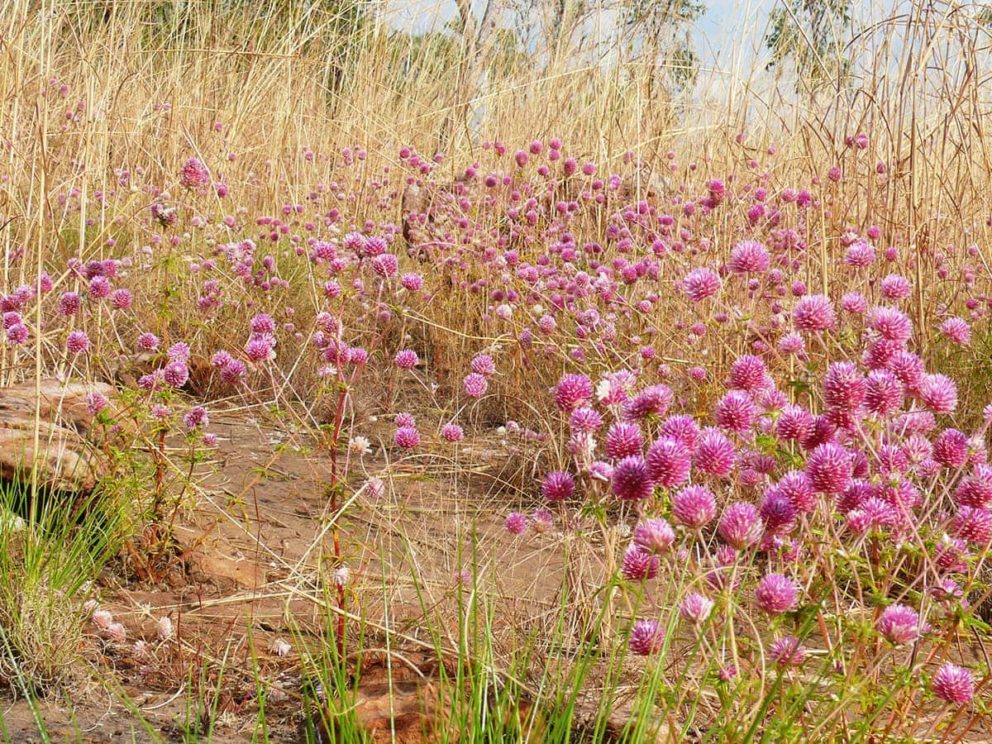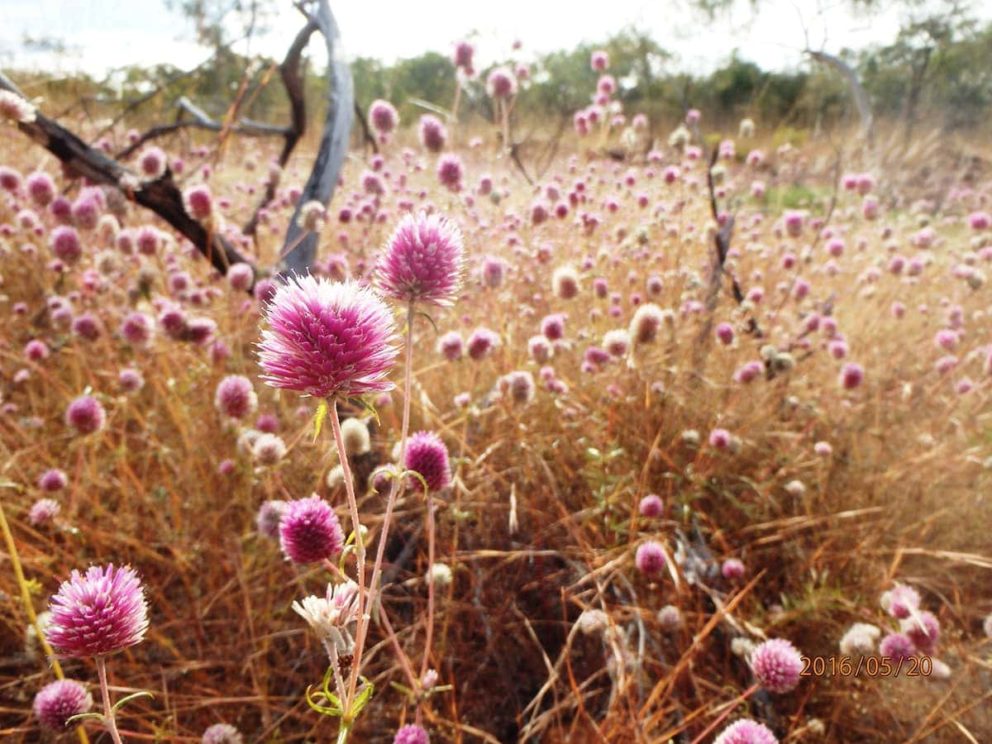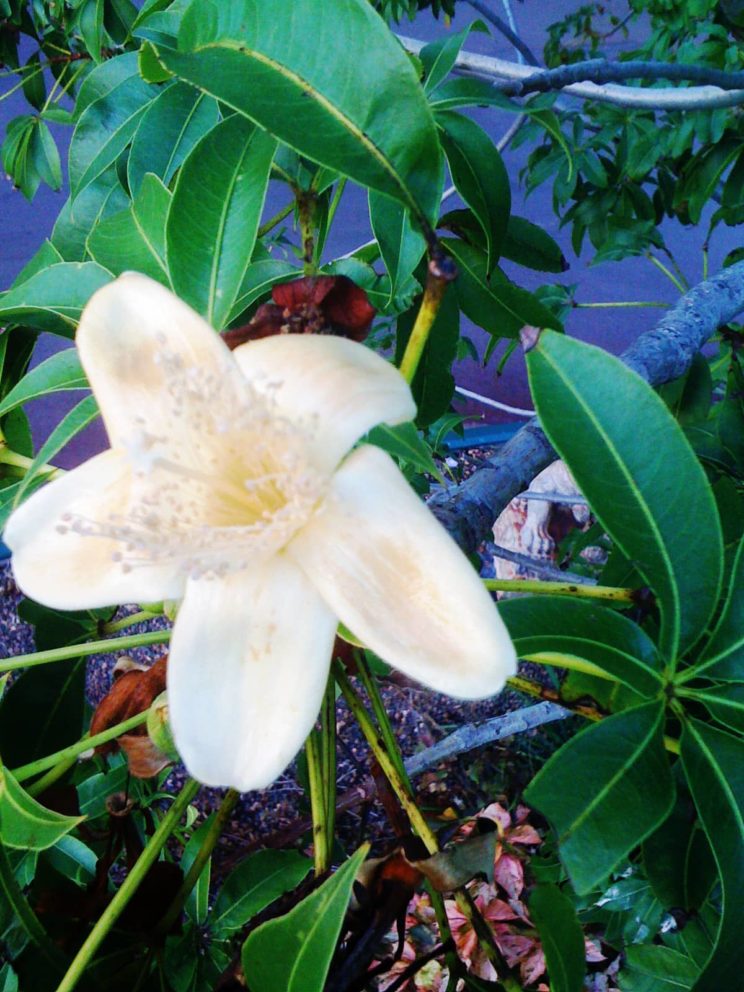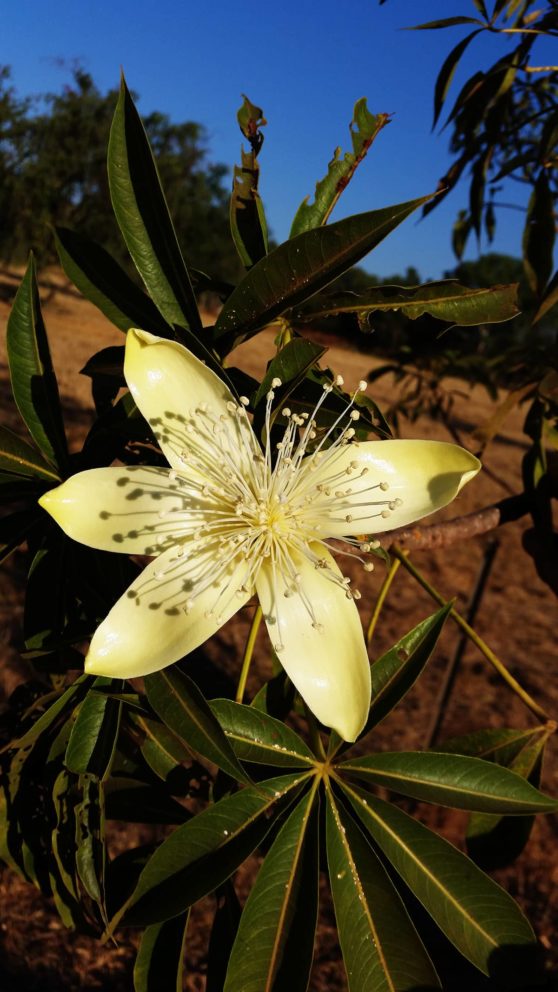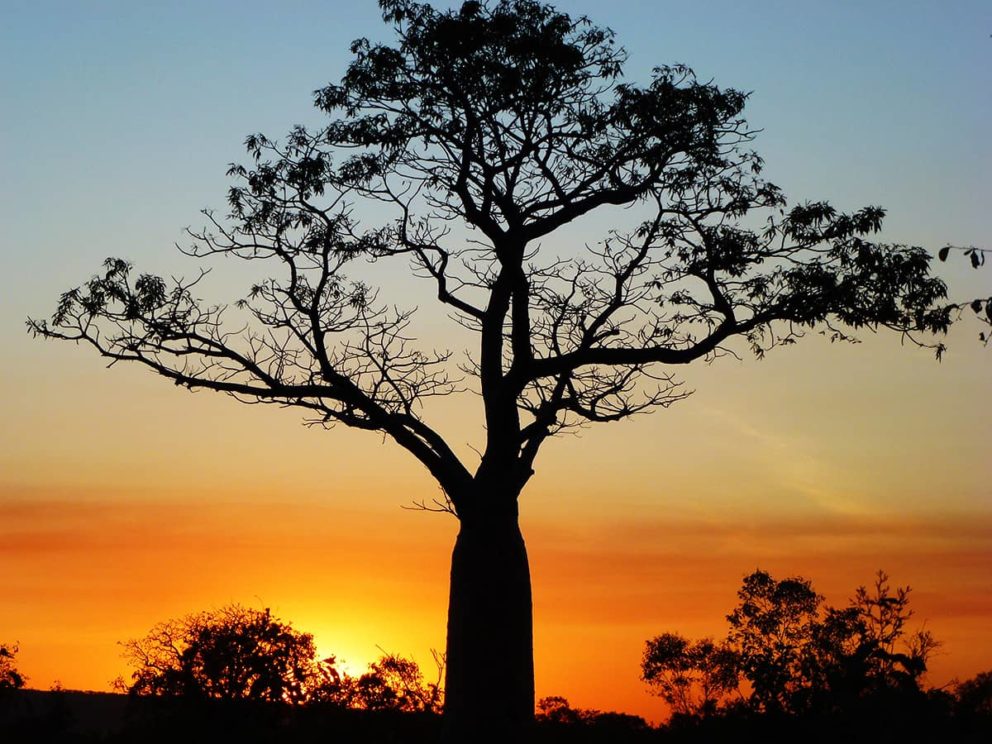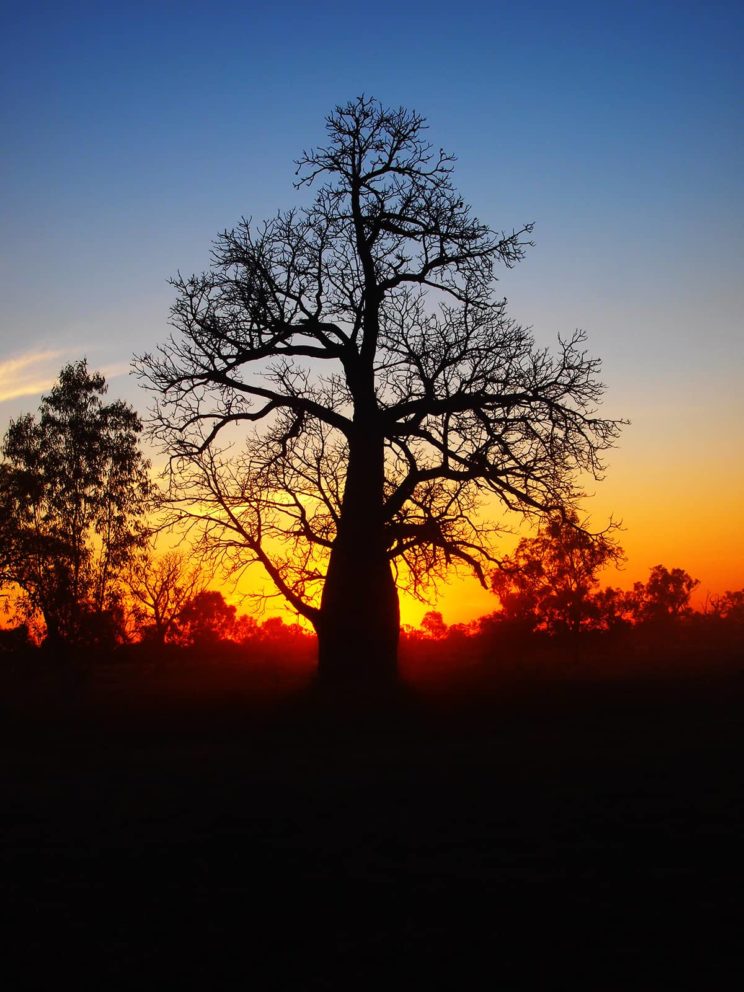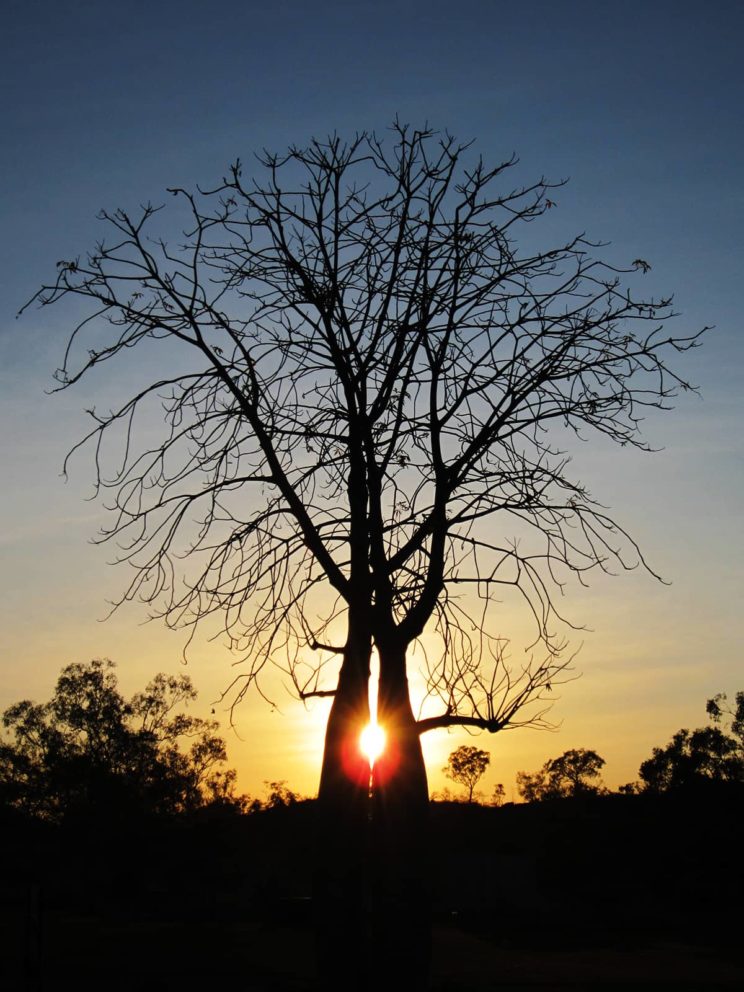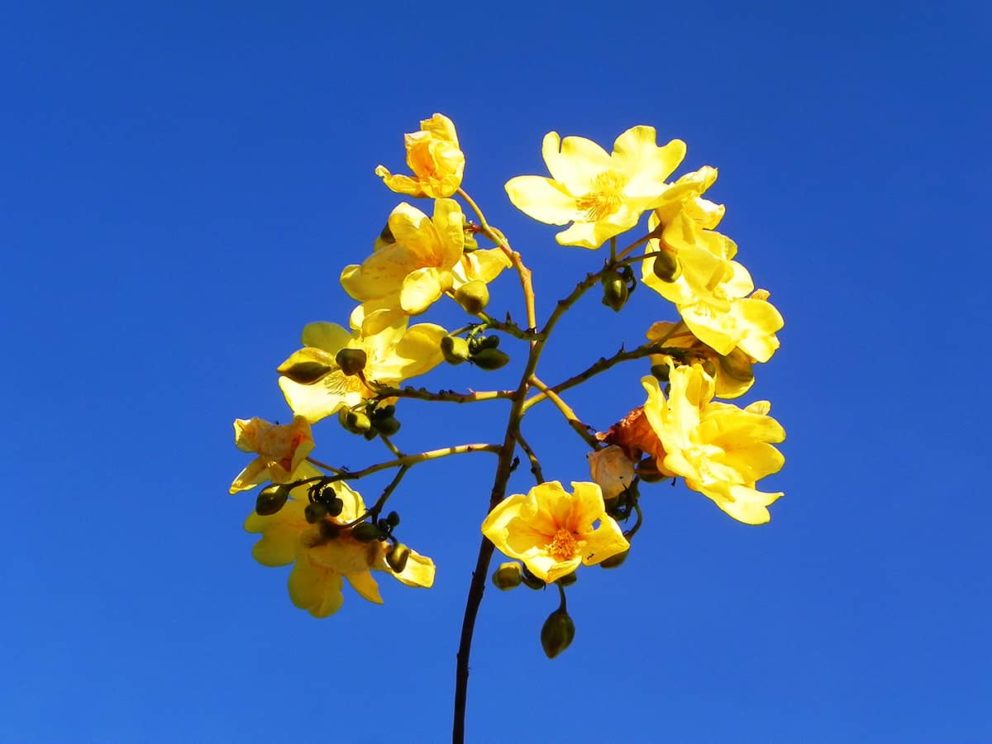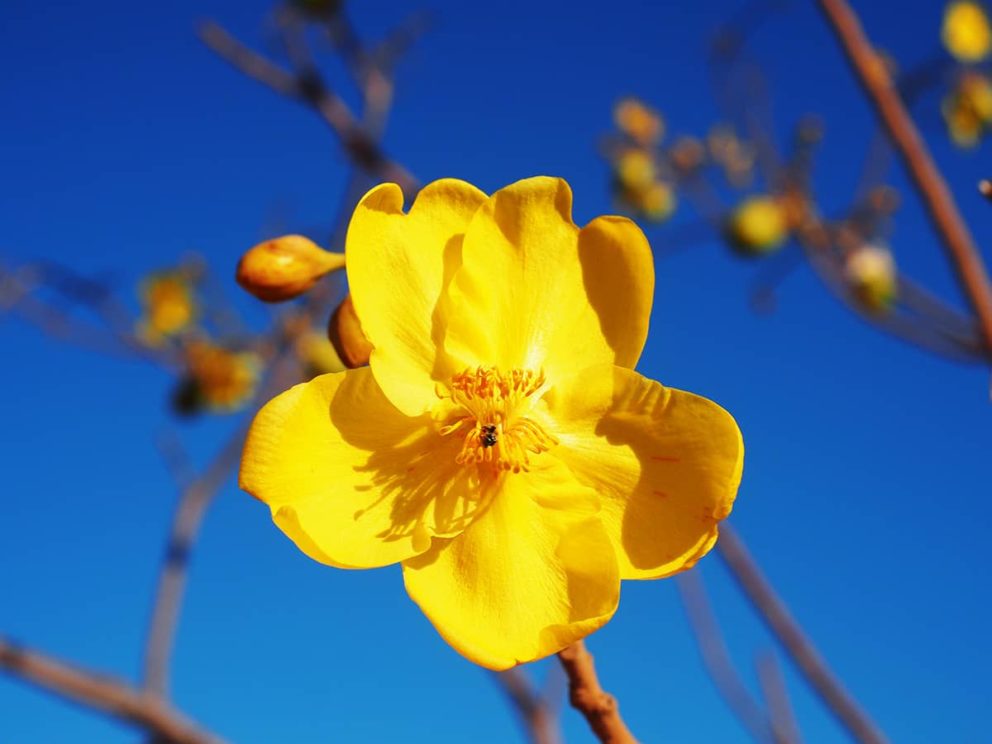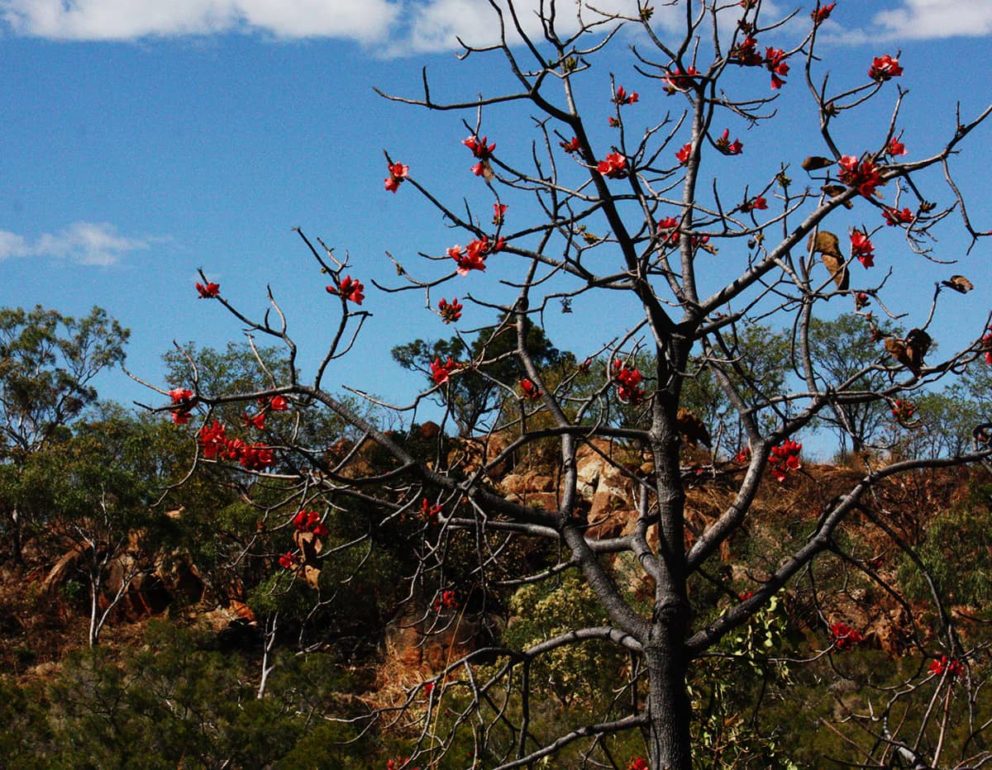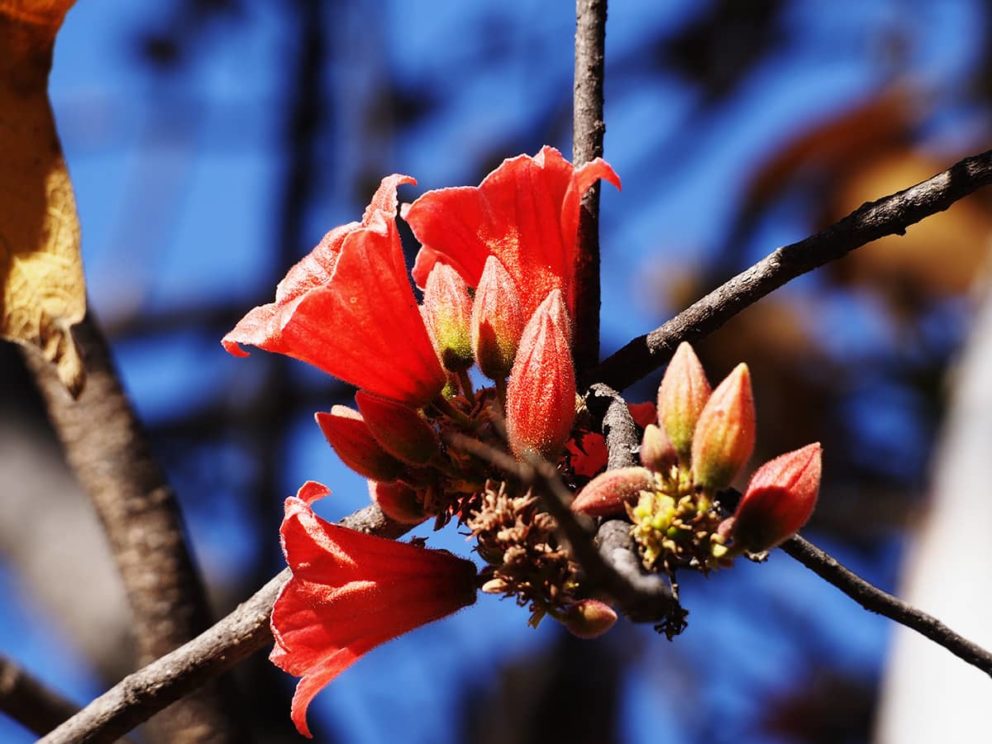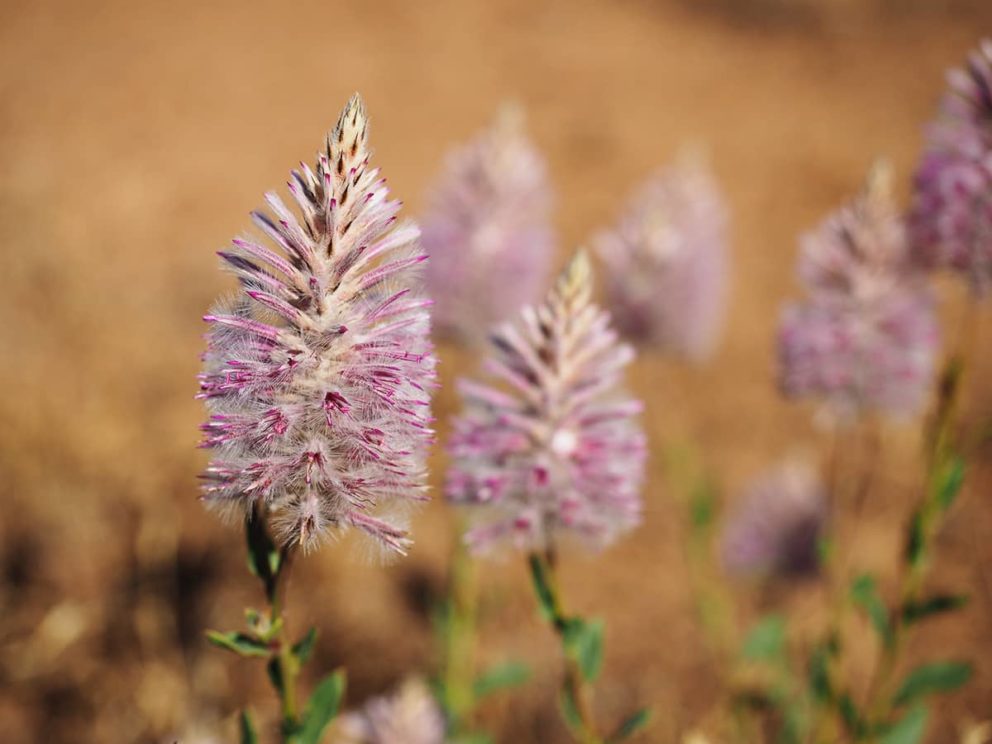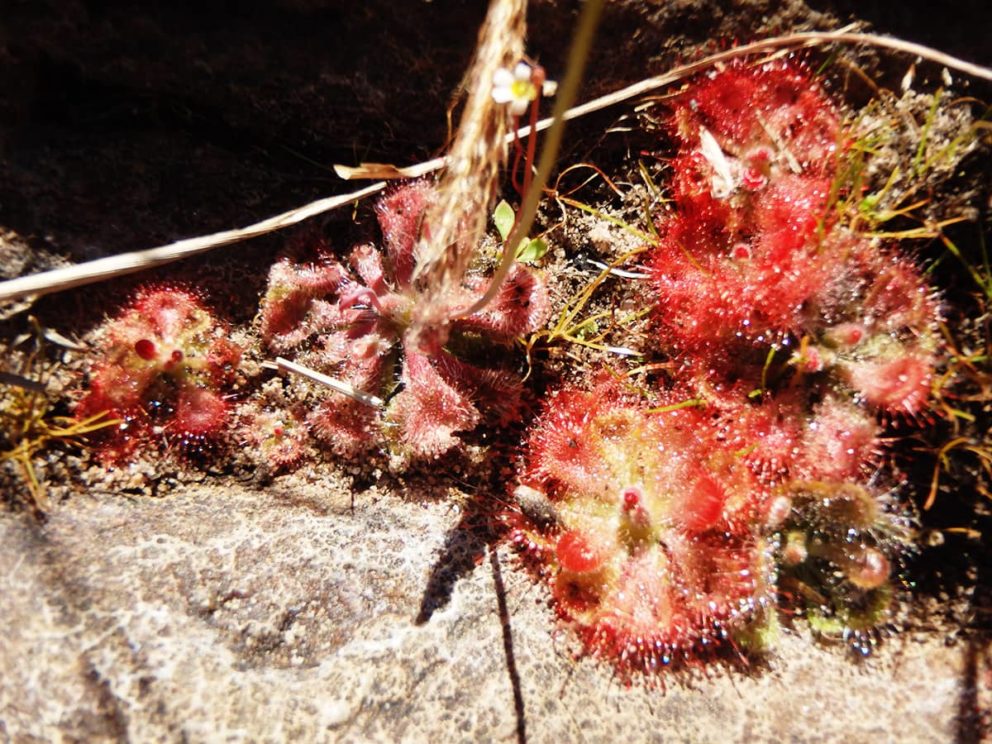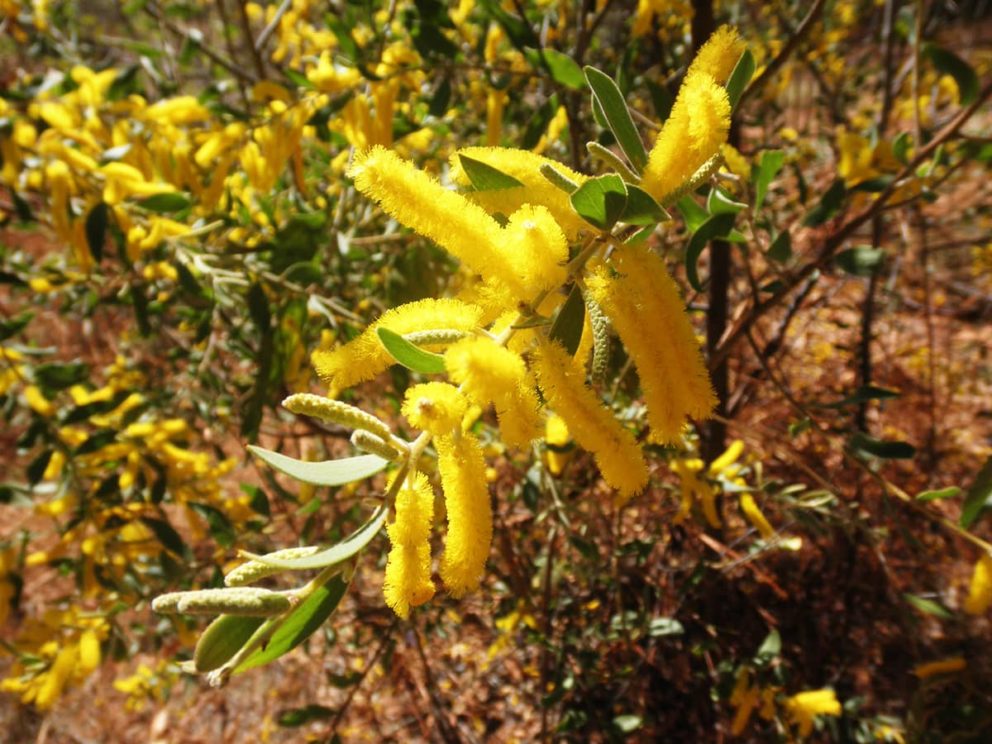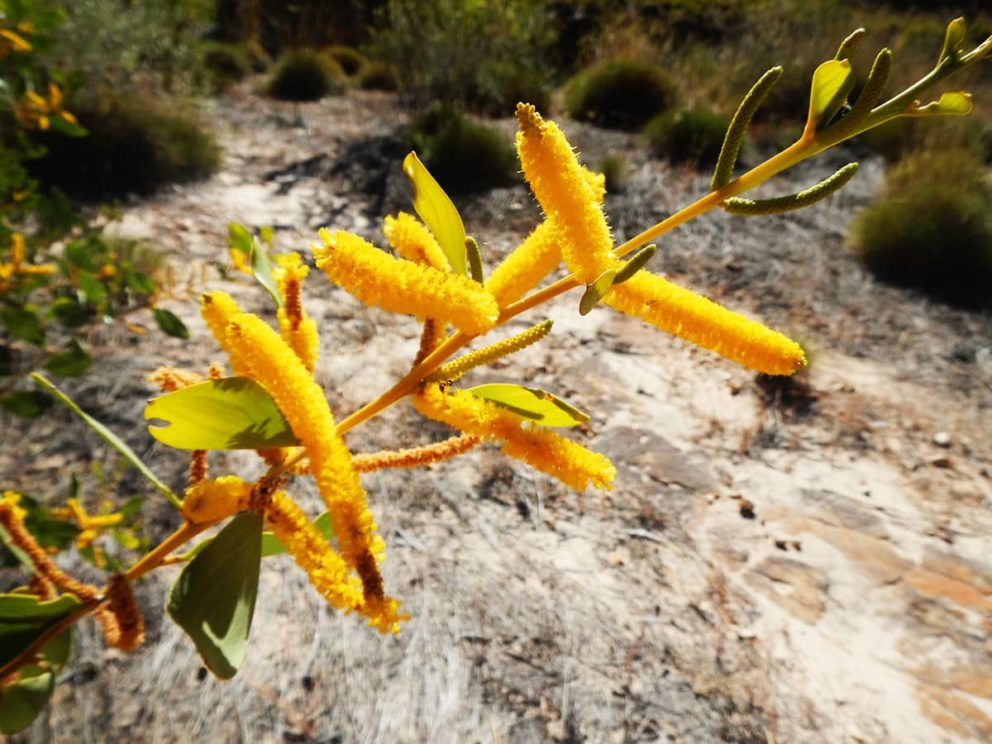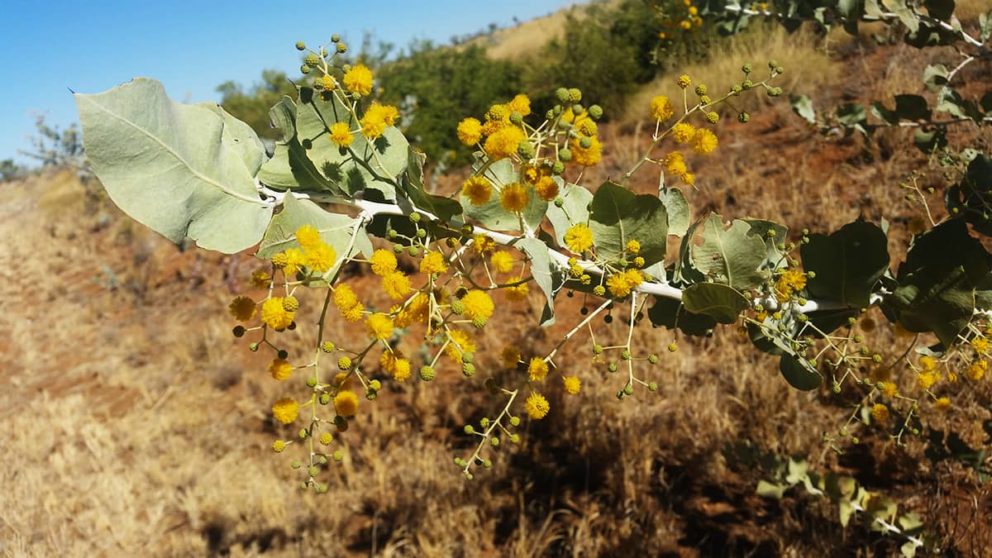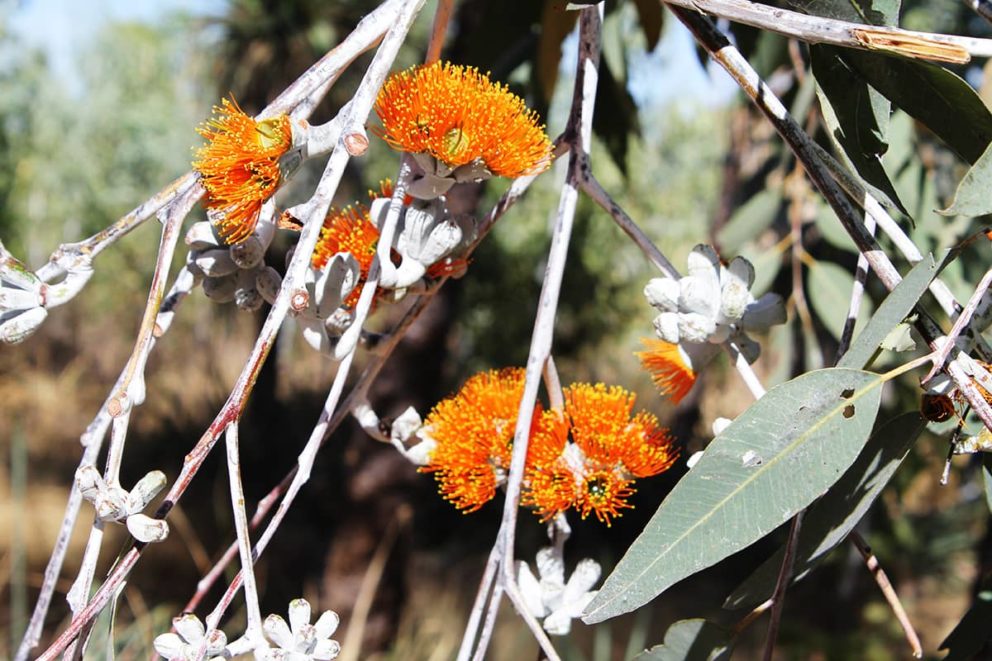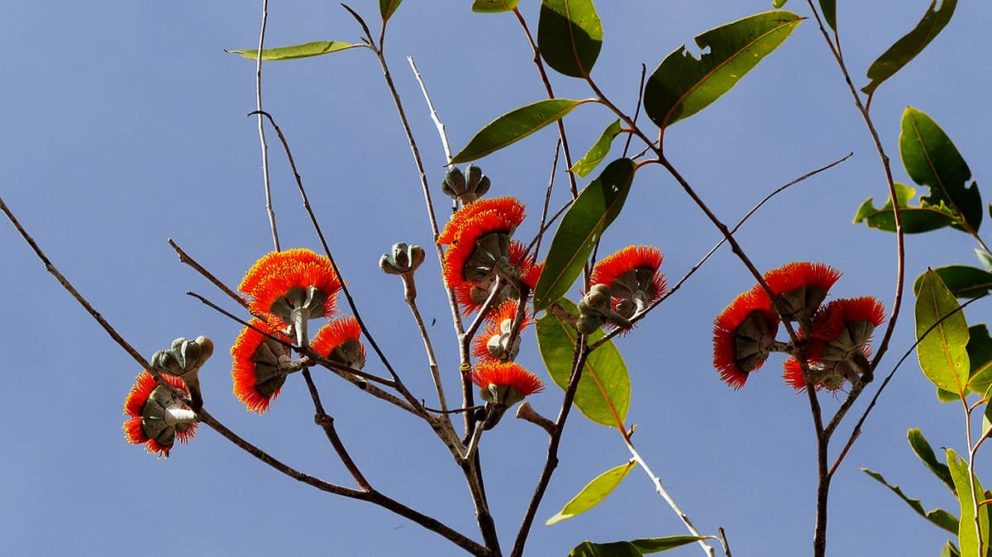Kimberley Wildflowers
You can see wildflowers and flowering trees throughout the Kimberley in the dry season.
The Kimberley has a diverse flora with varied differing landscapes. The Pilbara has a grand show of ground colour. This part of the Kimberley is more subtle but no less special. The flora in the Kimberley copes with intense rainfall and very dry conditions so the plants are immensely adaptive.
Within these very different environments are flowering trees, wildflowers, delicate grasses in different shades from gold to green, spinifex, ferns, and flowers that grow in very wet conditions. On all of our walks we enjoy the diverse Kimberley flora in a variety of settings.
We often see Bachelor's Button which is a small pink round flower. These are pretty to look at close up. Another eye catching flower we see is the Mulla Mulla - these are long purple flowers that seem to brighten up the roadside along the highway.
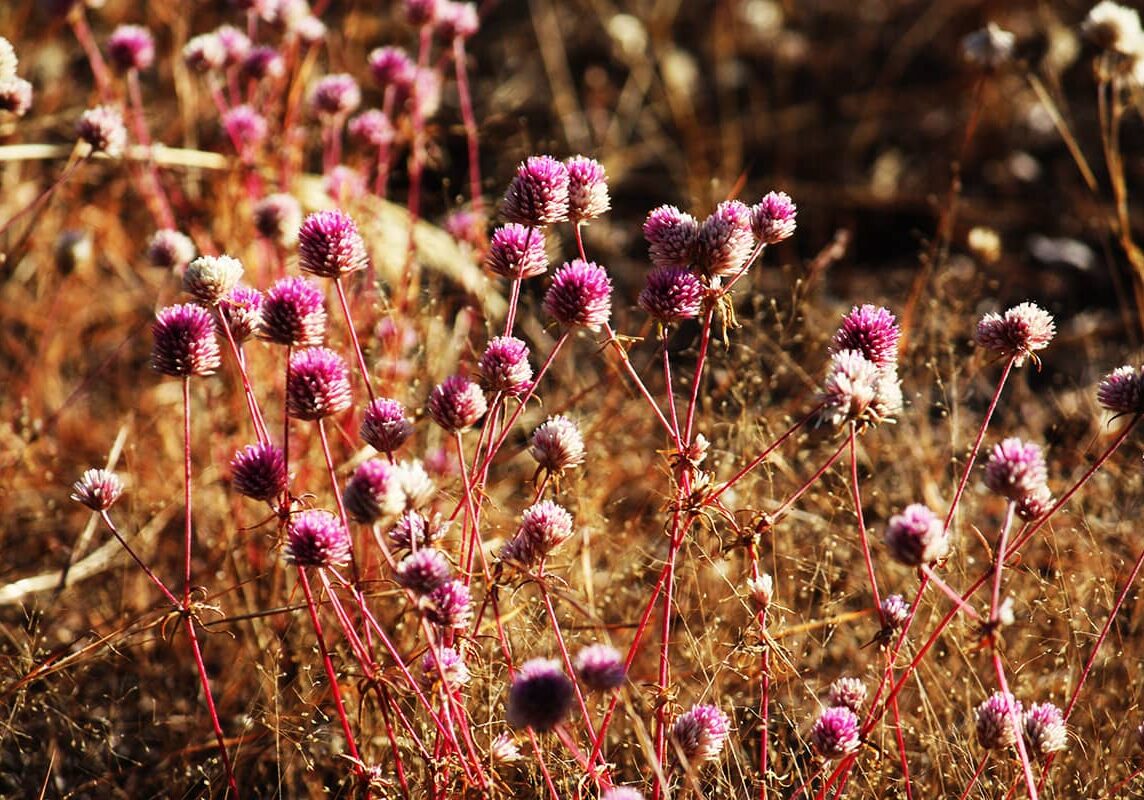

The Kimberley Rose or Sticky Kurrajong is an interesting native flowering tree. It looks surprisingly like a dead tree but when you get close you see these big bright red flowers.
We also see the Wooly Butt tree. These have intricate orange flowers that are very sculptural. The black cockatoos love to eat them and the birds pick the flowers from the trees leaving floral carpet round the base.
The Bauhinia is prolific in the Kimberley and it has a delicate blossom. It's a small red flower and has some beautiful long mauve leathery seed pods. This flower is another favourite for the honey eaters.
Over the dry season we will see yellow Kapok flowers and these are edible. We will see them throughout the tour but as we move into the slightly warmer East Kimberley you'll see more and more of them. The seed pods are spectacular and are a favourite with photographers.
The Wattle trees put on a wonderful show. They have small yellow flowers and there are several varieties native to the Kimberley that we see during the tour.
There are several types of Grevillea that bloom in the dry season. We see a Prickly Grevillea with the bright red flowers, a Silver Leaf Grevillea with a delicate orange flower and another - the Silky Grevillea which has a very long yellowy orange flower. These are all very attractive.
Some wild flowers clearly thrive near the water so you can see lilies in the waterways as well as the beautiful Sun Dew which grows in very slow flowing water throughout the Kimberley gorges.
Proximity to water is part of the reason why El Questro is such a great place for flowers and flowering trees. In the wet season a large volume of water runs throughout the gorges and the water contributes to the growth of big trees with an abundance of colour.
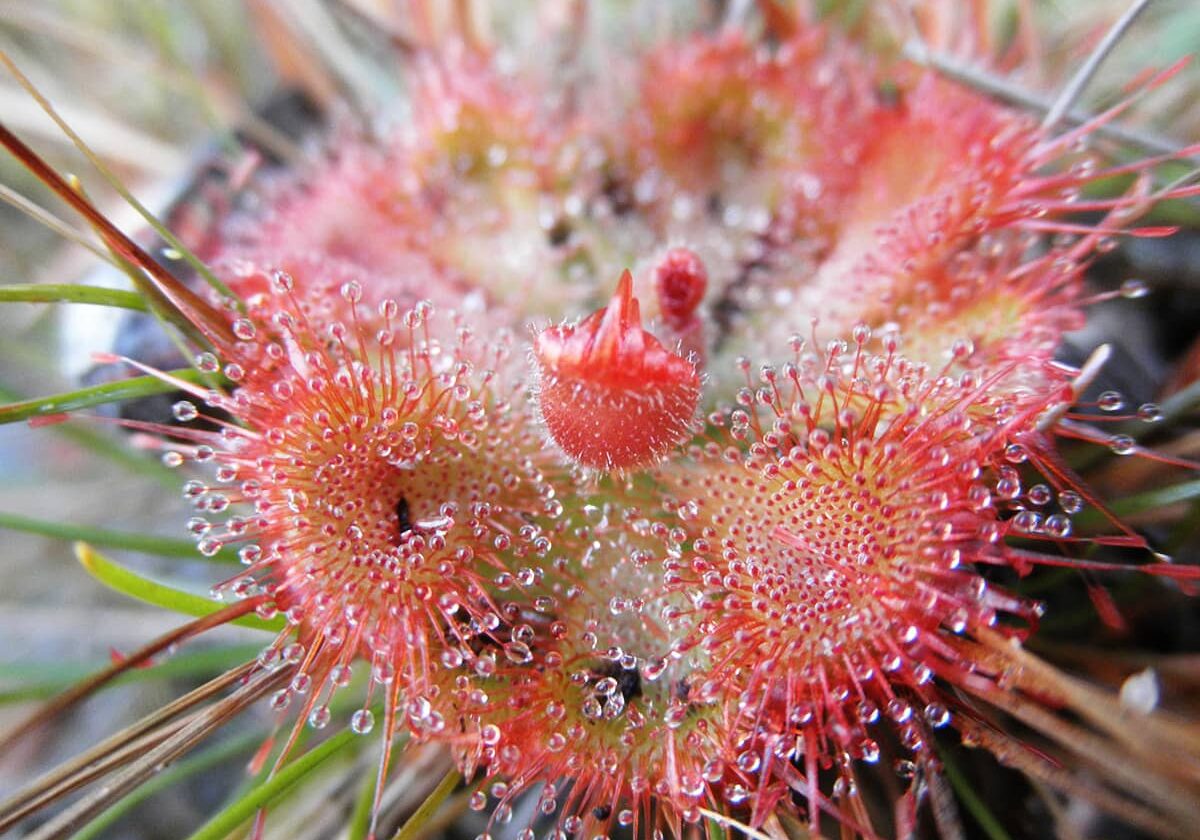
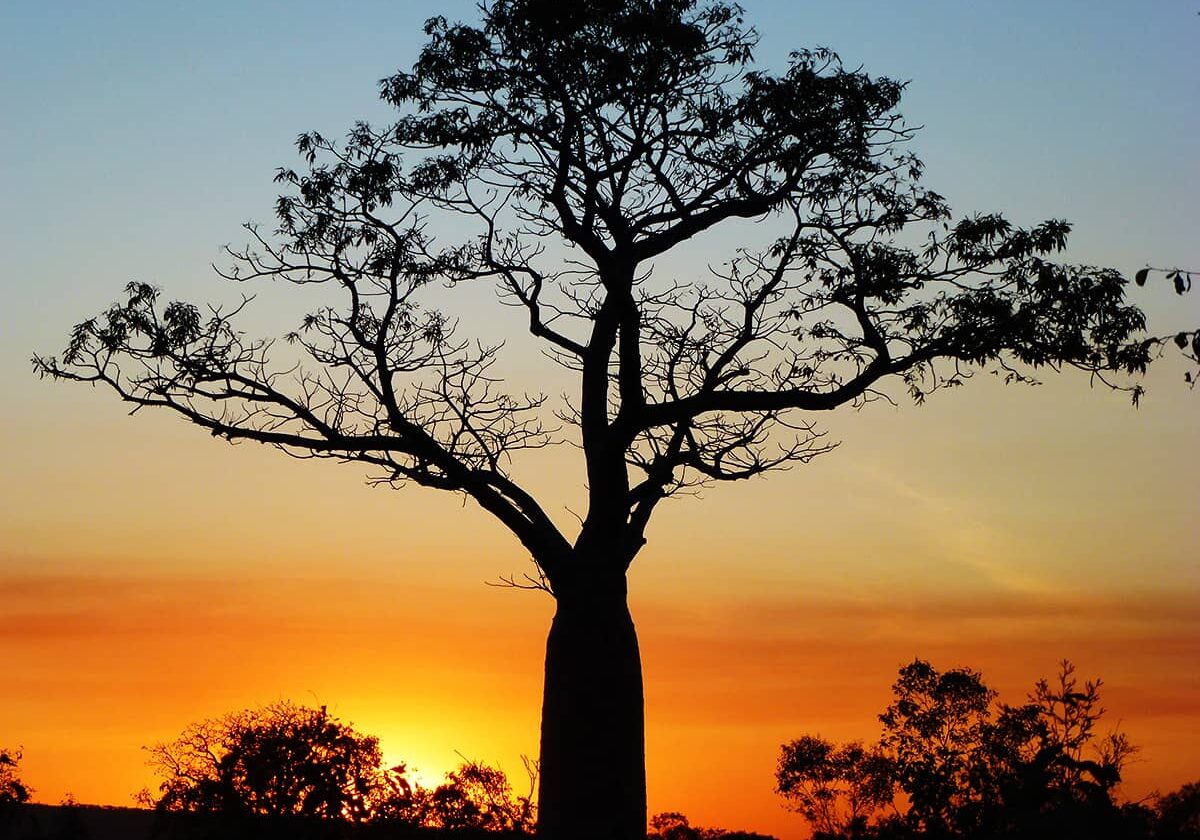
Purnululu experiences far less rain and is much lower and closer to the desert region. It has beautiful flowers and trees and you see a lot of flowering Wattles and the Grevillea with its red flowers.
The mysterious Boab Tree only occurring in the Kimberley and parts of the Northern territory. It has a big creamy white flower that appears on the tree for short periods during the wet season. Sometimes we get lucky and find them still on the trees in the dry when we are touring. It's a pleasure to point these flowers out. If you find one on the ground you will notice a strong scent.
The beautiful trees, grasses, ferns and flowers that are such a big part of the Kimberley landscape leave an impression of a place exotic, unique and special.

